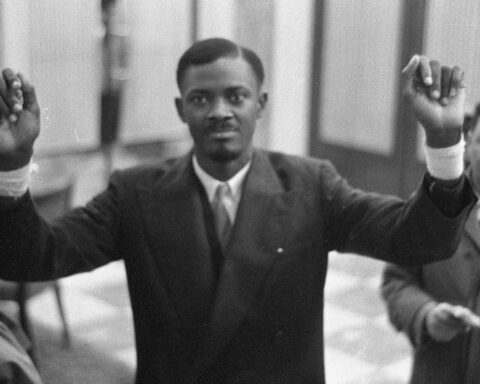The films of Guy Maddin are unmistakeable. Obsessed with the obsolete and the seemingly irrelevant, the weird and the lurid, Maddin has made a career as a summoner of disreputable ghosts. His cinema consists of dreams of films never made, employing long-abandoned styles and conventions made comically unnerving by their outdatedness. Taking advantage of the inherent surreality of old modes of filmmaking and storytelling, Maddin is one of the few directors in the contemporary Canadian avant-garde whose work is recognised internationally. My Winnipeg, his only doc feature (putting aside questions of its documentary status), is perhaps his most shining achievement.
Commissioned as a documentary about the director’s prairie hometown, My Winnipeg proceeds from the simple premise that a city is nothing without its ghosts: the mass of memories, legends and fictions that accumulate in any place inhabited by human beings. My Winnipeg is a film about the dream life of a city, a para-documentary about a parallel, phantasmagorical, invisible Winnipeg; it is a séance, a channelling of spirits through the medium of cinema, an exorcism of personal and collective history, as well as a memoir of one soul’s desperate final attempt at an escape from the city and its ghosts.
Shot through with Maddin’s characteristic humour and bizarre poetry, the film free-associates wildly among re-enactments of childhood scenes, archival footage and fantastical restagings of (allegedly) historical events in its attempt to elevate the self-diminishing town to the status of a mythic locale. The filmmaker recalls effusively the backdrop of sensations associated with his mother’s hair salon—“Corn plasters and Barbicide, girdles and talc”—and, with an oddly compelling mix of earnestness and irony, waxes nostalgic about the glory days of the Eaton’s department store and the old Winnipeg Arena, where he tells us he was born—right there in the locker room.
Compared to some of the wilder claims Maddin makes, that one is almost believable. Winnipeg, Maddin tells us, has ten times the sleepwalking rate of any other city in the world, and it is forbidden by law to deny a sleepwalker entry into one’s dwelling, should such a somnambulant wanderer come knocking in the night (as they often do). The city has an alternate network of nameless, illicit back lanes serviced exclusively by an underground taxi company exiled from the city’s official roadways. It is in these dark lanes that “memories most plausibly come alive.”
Not everything in My Winnipeg is untrue, but its most blatant fictions provide it with its most apt metaphors. The point is that the spirit of My Winnipeg is universal—every city exists alongside a parallel version of itself, an alternate para-city accessed only in dreams and memories, where reality becomes untethered from the facts and can become deeply, deeply strange. But what makes My Winnipeg so great is that, while in principle it could be made about any city, to anyone who watches the film it is painfully clear that only Guy Maddin could have made it, and by extension it could only be Winnipeg.
My Winnipeg is available on DVD, Blu-ray, and home video.











